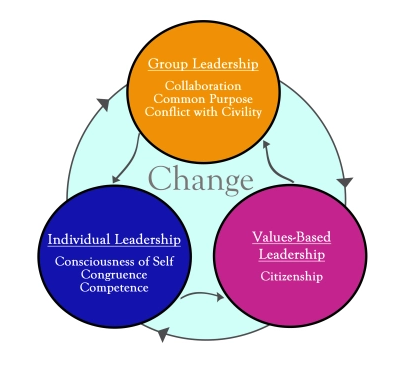Introduction
Social change can be cultural, religious, economic, scientific, or technological. Cultural social change concerns the values, beliefs, and norms that guide human behavior. Religion is often a significant force in social change; for example, the Reformation in 16th-century Europe led to significant changes in European society (Becker, 2020). Economic and social change may involve the need for new or different skills in the workforce (Becker, 2020). Advances in science and technology can also have an impact; for example, the development of the Internet has led to changes in how people communicate and do business.
Research
Population growth increases the potential for social change significantly. This is because larger populations tend to be more heterogeneous and, thus, more open to new ideas and ways of doing things (Mondal, 2019). Additionally, population growth can lead to increased competition for resources, which can spur social change.
Different economic periods cause social change in various ways. For instance, periods of economic growth tend to be associated with increased social mobility, which can lead to changes in social norms and values (Mondal, 2019). Technology causes social change by connecting people who might otherwise be isolated and can provide new platforms for communication and organizing (Mondal, 2019).
Religion influences social change by inspiring a rebellion among believers of a religious doctrine. For example, the civil rights movement in the United States was partly motivated by the Christian belief in the equality of all people (Mondal, 2019). Education causes social change by raising awareness of social issues and providing the skills and knowledge necessary to effect change.
Ways to Inspire Social Change
One way to bring about social change is through education. Educating people about the issues facing society can raise awareness and encourage people to take action. Another way to bring about social change is through activism (Feder, 2021). Activists strive to inform the public about social concerns and motivate individuals to get involved (Feder, 2021). Additionally, social change can be inspired by introducing laws that address social problems.
Furthermore, social change can be influenced through philanthropy (Feder, 2021). Donating money to organizations that address social issues is one way to do this. Another is volunteering to work with organizations that aim to address social problems.
Strategies for Social Change
Initiating a social change is a process that requires specific steps. First, it is essential to identify the specific social issue to be addressed (Feek, 2020). Secondly, once the issue has been identified, it is important to research it to understand the root causes and potential solutions better.
Thirdly, social change requires the support of a large group of people through building strong coalitions. Fourthly, developing an action plan that defines specific tactics and a timeline for implementation is essential (Feek, 2020). Once the action plan has been developed, it is essential to popularize it in the community through various channels to mobilize mass support for the cause (Feek, 2020). Lastly, the action plan must be implemented and monitored to identify and make necessary adjustments for an effective solution.
Social Change Model
For social change to be effective, a leader must inspire it by mobilizing the people toward achieving a common social goal. The social change process must adopt the social change model, which is based on three pillars: group leadership, individual leadership, and value-based leadership. These pillars work collaboratively to initiate the change.

Action Plan
The action plan for social change should define critical events that will drive the campaign. Some of the crucial elements that the action plan should have include the intended outcome (Johnhamerlinck, 2020). The action plan should also specify the events that will constitute the campaign, including the resources required, the campaign drivers, and the campaign’s frequency (Johnhamerlinck, 2020). Furthermore, the plan should outline the timeframe and locations of these events and the target audience. The events should conform to the preferences of the target audience. It is essential for the plan to outline the channels of communication.
The ideal communication channel should conform to the target audience’s preferences and effectively spread the message to the right people. Additionally, the communication channel should relay the message as often as possible. Moreover, the action plan should define the criteria for measuring the campaign’s success (Johnhamerlinck, 2020). Some standard success measures include positive feedback from the target audience and support from other societal stakeholders, such as funding programs for the campaign (Johnhamerlinck, 2020). Lastly, it is essential for the action plan to identify various ethical considerations and eliminate potential bias to protect the welfare of those who will be involved in the campaign.
Conclusion
In conclusion, social change is a multifaceted process influenced by economic, cultural, religious, scientific, and technological factors. Population growth, economic fluctuations, and technological advancements play significant roles in shaping societal norms and behaviors. Education, activism, legislation, and philanthropy are effective methods of inspiring social change, each contributing to raising awareness and driving collective action.
Strategic planning and strong leadership are crucial for initiating and sustaining social change efforts. The social change model emphasizes group, individual, and value-based leadership and provides a structured approach to mobilizing communities toward common goals. A practical action plan should clearly define the desired outcomes, necessary resources, and communication strategies, ensuring that campaigns resonate with and engage the target audience. Social change initiatives can achieve meaningful and lasting impact by considering ethical implications and continuously monitoring progress. Ultimately, the collaborative efforts of informed and motivated individuals can drive significant transformations in society.
References
Becker, J. C. (2020). Ideology and the promotion of social change. Current Opinion in Behavioral Sciences, 34, 6-11. Web.
Feder, M. (2021). What is social change? 5 ways to get involved. University of Phoenix. Web.
Feek, W. (2020). Social Change Principles and Strategies. The Communication Initiative Network. Web.
Johnhamerlinck. (2020). Action plans for Social Change. Leading Differently. Web.
Mondal, P. (2019). Factors of social change. Your Article Library. Web.
Werpalblog, (2019). The social change model. Weronika’s world. Web.